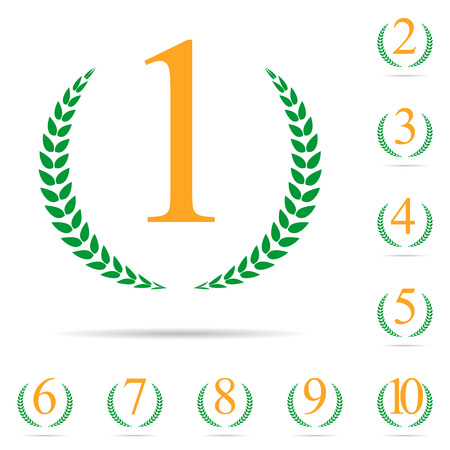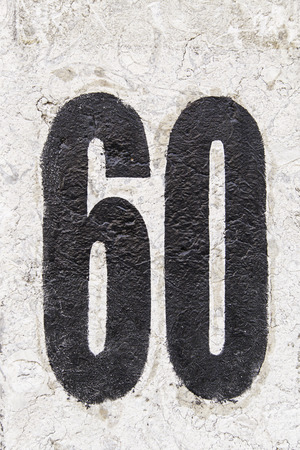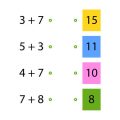1. Introduction to Runes and Western Divination
Runes are ancient symbols that originated in Northern Europe, especially among the Germanic and Norse peoples. While many people today recognize runes for their mysterious shapes and connection to Viking history, these characters have a much deeper meaning within Western divination practices. In Western culture, divination is the art of seeking knowledge or guidance through supernatural means. Runes have become one of the most popular tools for this purpose, often used in readings to gain insight into personal questions, future possibilities, or spiritual matters.
What Are Runes?
Originally, runes were letters in several early alphabets used by Germanic tribes, known as “runic alphabets” or “futharks.” Each rune has its own unique sound, name, and symbolic meaning. Unlike regular letters, runes were believed to hold magical powers and were often carved into stones, wood, or metal for both writing and mystical purposes.
Runic Alphabets Overview
| Name | Region | Time Period | Number of Symbols |
|---|---|---|---|
| Elder Futhark | Northern Europe | 2nd–8th Century CE | 24 |
| Younger Futhark | Scandinavia | 8th–12th Century CE | 16 |
| Anglo-Saxon Futhorc | England & Frisia | 5th–11th Century CE | 28–33 |
The Role of Runes in Western Divination Practices
In Western culture, runes have been used for divination since at least the early Middle Ages. People would cast a set of rune stones or draw individual runes to answer questions about love, career, health, and other life events. Each rune symbol represents specific concepts or energies—for example, “Fehu” stands for wealth and prosperity while “Ansuz” symbolizes communication and wisdom.
Common Uses of Runes in Divination
- Rune Casting: Drawing multiple runes and interpreting their meanings together.
- Single Rune Draw: Pulling one rune for quick guidance on a question.
- Talisman Creation: Carving or wearing runes for protection or good luck.
- Meditation Aid: Focusing on a single runes meaning during meditation sessions.
Cultural Significance Today
The use of runes in divination is still growing in popularity across the United States. Many Americans are drawn to their ancient roots and find them helpful for self-reflection and decision-making. Whether you see them as spiritual tools or simply as a way to tap into your intuition, runes offer a unique window into the world of Western mysticism and folklore.
2. Historical Origins of the Runic Alphabet
The runic alphabet, also known as the “Futhark” after its first six letters, has a fascinating history that stretches back over a thousand years. Its roots are deeply embedded in the cultures of early Germanic tribes who lived in what is now Scandinavia, Germany, and other parts of Northern Europe. The first known use of runes dates back to around the 2nd century CE, making them one of the oldest writing systems in Western Europe.
Early Development Among Germanic Tribes
The earliest runic inscriptions were carved on objects like weapons, jewelry, and stones. These early Germanic peoples used runes not just for communication but also for magical and ritualistic purposes. For instance, warriors would inscribe protective symbols on their swords or shields, believing that these marks would bring them luck or protection in battle.
Major Runic Alphabets
Over time, different forms of the runic alphabet developed based on region and usage. Here’s a simple table to highlight the main types:
| Name | Region | Period | Number of Characters |
|---|---|---|---|
| Elder Futhark | Northern Europe (Scandinavia, Germany) | c. 150–800 CE | 24 |
| Younger Futhark | Scandinavia | c. 800–1100 CE | 16 |
| Anglo-Saxon Futhorc | England & Frisia | c. 400–1100 CE | 28–33 |
Cultural Context and Spread
The spread of the runic alphabet was closely tied to migration and trade among Germanic peoples. As these tribes moved across Europe, they brought their runic traditions with them. This allowed the runes to evolve and adapt to new languages and cultural practices. Despite their practical uses in record-keeping and marking property, runes always retained an air of mystery and magic in European folklore.

3. Spiritual and Mystical Significance of Runes
Understanding the Deeper Symbolism of Runes
Runes have long been associated with more than just letters or a writing system. In ancient Norse and Germanic cultures, runes were believed to hold powerful spiritual meanings. Each rune symbolized a unique concept or force of nature, like protection, wisdom, or transformation. Over time, these symbols became tools for divination and self-discovery in Western traditions.
Historical Perspectives on Rune Meanings
Historically, people believed that runes could connect them to the spiritual realm. Shamans and mystics would use rune stones during rituals to seek guidance from the gods or the universe. The act of casting runes was seen as a sacred way to uncover hidden truths about one’s life path.
| Rune Name | Symbol | Traditional Meaning | Modern Interpretation |
|---|---|---|---|
| Fehu | ᚠ | Wealth, Prosperity | Abundance, New Opportunities |
| Ansuz | ᚨ | Communication, Wisdom | Insight, Inspiration |
| Algiz | ᛉ | Protection, Defense | Safety, Boundaries |
| Berkana | ᛒ | Growth, Fertility | New Beginnings, Healing |
| Eiwaz | ᛇ | Transformation, Endurance | Change, Inner Strength |
The Role of Runes in Modern Western Spirituality
Today in America and other Western cultures, runes are often used in personal growth practices and spiritual readings. Many people draw a rune each day as a form of meditation or journal prompt. Others turn to rune sets for guidance during challenging times. Some even wear rune jewelry as a reminder of their chosen intentions or values.
Everyday Examples of Runes in American Life:
- Meditation: Focusing on a single rune’s meaning during mindfulness exercises.
- Counseling: Therapists and coaches sometimes use rune symbolism to help clients reflect on challenges.
- Tattoo Art: Americans often choose runes as tattoos for their symbolic power and connection to heritage.
- Cultural Events: Viking festivals and Renaissance fairs frequently feature rune readings as part of the experience.
This deep spiritual and mystical layer is what keeps runes relevant today—not only as artifacts from history but as living symbols that speak to our inner journeys and collective imagination.
4. Runes in Popular Western Culture
Runes have traveled a long way from their origins as ancient Germanic and Norse symbols. In modern America, these mysterious characters are no longer just relics of the past—they’ve become an exciting part of popular culture. Let’s explore how runes have found new life in American media, art, and spiritual practices.
Runes in Movies, TV Shows, and Books
Many Americans first encounter runes through pop culture. Hollywood movies and fantasy series often use runic symbols to create a sense of magic or mystery. For example, the “Lord of the Rings” films use runes to decorate magical objects and ancient maps. TV shows like “Vikings” display runes to highlight Norse heritage, while books such as Rick Riordan’s “Magnus Chase” series introduce young readers to rune-based magic.
| Medium | Example | How Runes Are Used |
|---|---|---|
| Movies | The Lord of the Rings | Runic inscriptions on swords and doors for mystical effect |
| TV Shows | Vikings | Authentic-looking rune carvings to convey Norse identity |
| Books | Magnus Chase Series | Characters use runes as magical tools or spells |
Runes in American Art and Design
Apart from media, runes have inspired American artists and designers. Tattoo artists often incorporate runic letters into body art for those seeking a connection with their ancestry or personal meaning. Jewelry designers craft pendants and rings with rune engravings, believing these symbols can offer protection or good luck. Even home decor items—like wall hangings or mugs—feature stylish rune motifs.
Popular Uses of Runes in Art & Design
- Tattoos: Personal symbols for strength, love, or wisdom
- Jewelry: Amulets engraved with protective runes
- Decor: Modern Nordic-inspired designs for homes and events
Runes in Modern Spiritual Practices
The spiritual side of runes is thriving in America too. Many people use rune stones as divination tools, similar to tarot cards. Others meditate with runes or include them in rituals for guidance and self-discovery. New Age shops often sell rune sets along with books explaining their meanings and uses.
Main Ways Americans Use Runes Spiritually:
- Divination: Drawing rune stones for answers to life questions
- Meditation: Focusing on a single rune’s meaning for insight or clarity
- Rituals: Using runes to set intentions or seek protection during ceremonies
This blending of old symbols with new traditions shows how flexible and appealing runes remain today. In American culture, they continue to inspire imagination, creativity, and personal growth.
5. Contemporary Use of Runes in Divination
Runes in Modern Western Spirituality
Today, runes are more than just ancient symbols from Northern Europe; they have found a new life as tools for divination and personal growth across the United States and other Western countries. Many people turn to runes not only out of curiosity about their historical roots but also for guidance, insight, and self-discovery. In American culture, where self-help and personal spirituality are popular, rune readings have become a common practice at metaphysical shops, holistic fairs, and even online communities.
How Runes Are Used for Divination Today
The process of using runes for divination is quite simple and accessible. People often use small stones or wooden tiles engraved with the ancient runic alphabet. A typical session involves asking a question or focusing on an issue, then drawing one or more runes at random. Each symbol has its own meaning, which can relate to love, career, health, or personal challenges. The meanings are interpreted based on traditional lore and modern intuition.
Common Methods of Rune Casting
| Method | Description |
|---|---|
| Single Rune Draw | Pulling one rune for quick guidance or daily inspiration. |
| Three-Rune Spread | Drawing three runes to represent past, present, and future influences. |
| Casting the Runes | Tossing several runes onto a cloth and reading the symbols that land face up. |
Popular Uses in the United States
In the U.S., rune divination is often blended with other spiritual practices like tarot reading, astrology, or meditation. Workshops and classes teach beginners how to use runes for personal insight or decision-making. Some people keep rune sets at home for occasional guidance, while others incorporate them into regular rituals or journaling routines. Online platforms also make rune readings widely accessible through virtual consultations and digital resources.
Why People Choose Rune Readings Today
- Simplicity: No complex equipment or long study required—just a set of runes and a willingness to reflect.
- Cultural Connection: Many Americans appreciate learning about their European heritage through these symbols.
- Personal Empowerment: Interpreting rune messages can help individuals feel more confident in making choices or understanding their feelings.
- Community: Sharing rune experiences connects like-minded people both in-person and online.
The Evolving Role of Runes in Western Divination
While rooted in ancient traditions, runes have adapted well to modern Western spirituality. They offer a unique blend of history, mystery, and practical advice that continues to attract new generations seeking meaning beyond the ordinary.


